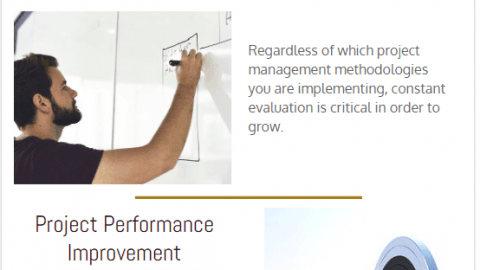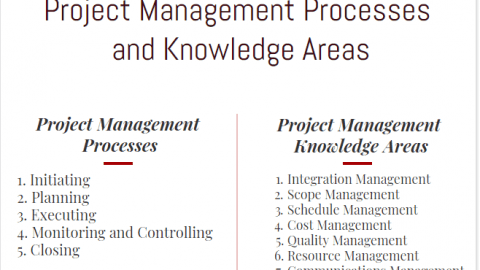7 Tools To Ensure Projects Operate Swiftly And Efficiently
In today’s business landscape, effective project management tools have become indispensable for ensuring projects operate smoothly and efficiently. These tools have revolutionized the way project managers oversee their operations, streamline communication, and mitigate risks. With a myriad of options available, how do you determine the ones that offer the best functionality for your business needs?
Table of Contents
To help answer that question, here are seven project management tools that can help optimize operations and boost efficiency.
1. Resource Management Tools
Resource management tools are essential in assigning and monitoring project resources. By streamlining resource allocation, these tools eradicate wastage, maintain workload balance, and increase productivity and efficiency.
Take, for instance, a software development project. These tools can help allocate developers, testers, and user experience (UX) designers based on their skills and availability. They can also assist in managing physical resources such as servers and software licenses.
A key feature of these tools is their report-generation capability. These reports provide visibility into who’s handling what, identify potential work capacity, and spot over-stretched resources. This empowers you to balance your workload, improving project efficiency.
2. Task Management Tools for Projects
Imagine how much time you could save with efficient task management tools. These tools are excellent for organizing, scheduling, and prioritizing tasks effectively, potentially transforming your workday.
They provide a visual workflow, giving project managers a bird’s eye view of the entire project’s status. Furthermore, by facilitating the assignment and tracking of individual tasks, these tools ensure accountability among team members.
In addition to traditional task management tools, there are other tools that can help streamline specific aspects of task management. For example, Foxit is a tool that can simplify document management. It allows you to swiftly and securely share, edit, and collaborate on business files, which is a critical part of task management.
3. Communication Tools
Effective communication among team members is crucial to the success of a project. Communication tools, equipped with features like instant messaging, video conferencing, and file sharing, facilitate swift, easy, and efficient exchanges of information. This fosters effective team collaboration.
But these tools aren’t just for exchanging messages. They can also serve as platforms for brainstorming ideas, providing updates, and acknowledging achievements. This can further enhance team cohesion and morale.
In addition to facilitating communication, these tools for projects often provide features that aid in organizing discussions and preserving valuable insights. This turns conversations into actionable items and helps ensure that important information isn’t lost in the shuffle.
4. Risk Management Tools
What if you could anticipate and control project risks before they even happen? That’s the power of risk management tools. They lend a hand in identifying, assessing, and mitigating project risks.
They lend a hand in crafting risk management plans, arming project managers with the means to foresee potential problems and adopt proactive measures. The result? A drop in project uncertainties and a rise in overall efficiency.
A distinguishing feature of these tools for projects is their scenario analysis capabilities. By simulating varying risk scenarios and assessing potential impacts, they steer strategic planning and decision-making processes. Consequently, project managers can hatch contingency plans, preparing for success even in the face of unforeseen risks.

5. Time-Tracking Tools
Time-tracking tools monitor the time team members spend on each task, ensuring productivity is maximized and work is completed within the given timeframe. Additionally, they can provide valuable insights into workforce utilization, which can aid in planning and forecasting for future projects.
On another note, these tools can be instrumental in cultivating transparency and accountability within the team. With a clear record of time spent on tasks, team members can better understand their productivity levels, and project managers can accurately identify areas needing improvement or support.
6. Data Visualization Tools
Converting intricate project data into easy-to-understand visuals is the core function of data visualization tools. They allow project managers to recognize patterns, trends, and insights quickly, significantly improving decision making. These tools can track project key performance indicators (KPIs) and visually represent them, leading to quicker comprehension and action.
By presenting data visually, they make it easier for everyone. Even those without technical knowledge, to understand the project’s progress and the implications of the data, promoting informed discussions and decisions.
7. Quality Management Tools
Quality management tools ensure consistency and high standards in project deliverables. They assist in developing quality control and quality assurance processes, which are essential to prevent defects, reduce errors, and increase customer satisfaction.
Additionally, these tools can drive continuous improvement within projects. By systematically tracking quality metrics and analyzing deviations, they can help uncover the root causes of issues and identify opportunities for process improvements.
- A flowchart is a graphical representation of a process, showing the steps, decision points, and the flow of activities. It helps in understanding and improving processes by identifying bottlenecks and areas for optimization.
- A check sheet is a simple data collection tool used to track the frequency of events or defects. It provides a structured way to gather data and identify patterns.
- A histogram is a graphical representation of the distribution of numerical data. It helps visualize the central tendency, dispersion, and shape of the data, making it easier to identify patterns and potential issues.
Final Thoughts on Tools for Projects
Incorporating these tools into your project management strategy can greatly enhance your team’s performance. However, they’re most potent when tailored to your project’s requirements and your team’s abilities.
Remember, while tools can greatly assist, they aren’t substitutes for good management practices, skilled team members, effective communication, and solid collaboration. Consider these tools as allies, amplifying your team’s efforts in the rewarding world of project management.
Now, think about how implementing these tools might transform your current project management strategy. Are you ready to take that step?

Christine Tomas is a tech expert, consultant, and aspiring writer. She writes for different news portals and thematic blogs for tech experts that helps her stay at the heart of programming, technology news.










